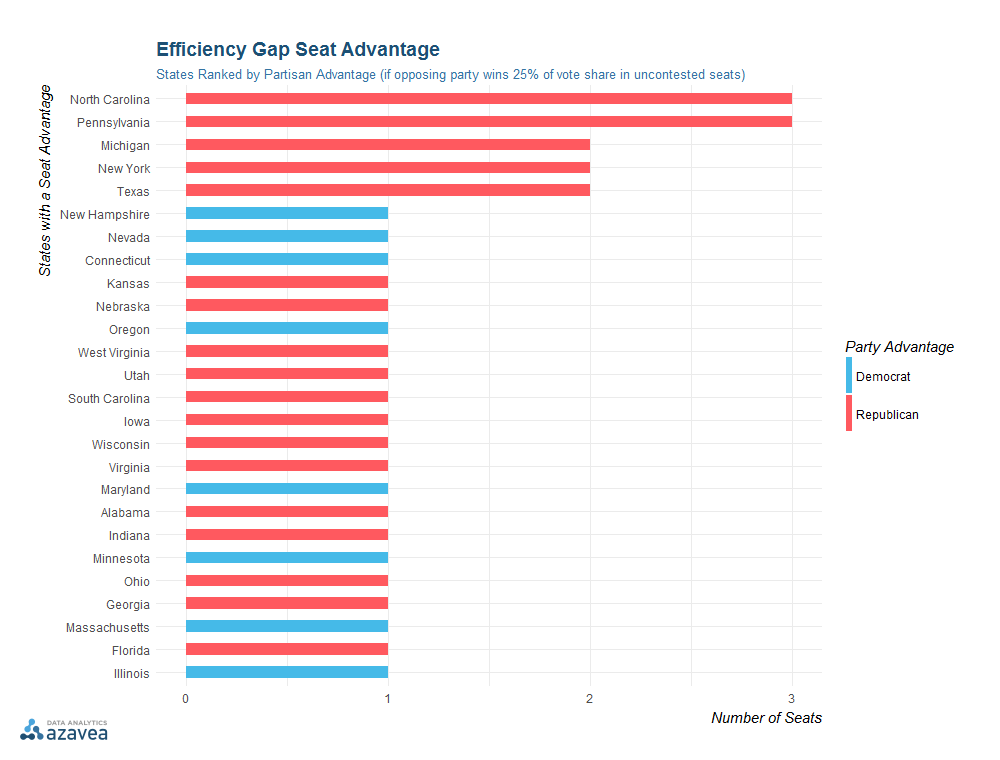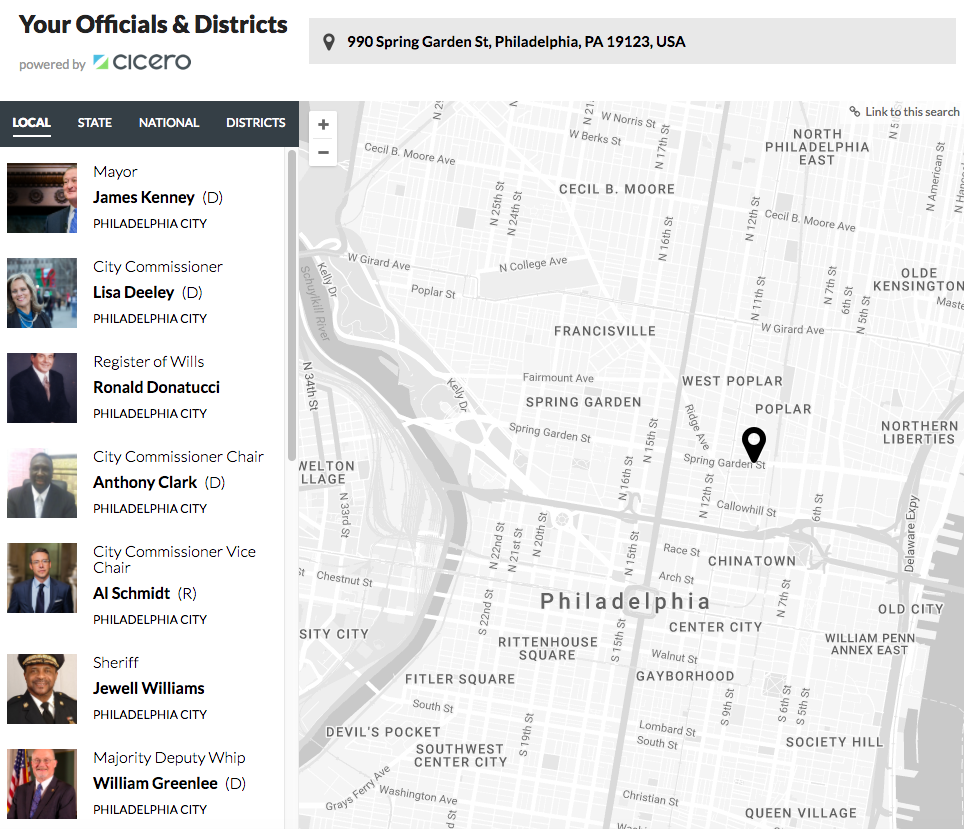In Part 2 of our 3-part series on Azavea’s redistricting and gerrymandering work, we release and report on our efficiency gap rankings.
Partisan Gerrymandering Rankings
In our previous blog post, we explained the history of Azavea’s work in redistricting, and introduced a new measure of partisan gerrymandering, the efficiency gap.
The efficiency gap was introduced in an influential 2015 paper by researchers Nick Stephanopoulos and Eric McGhee. The formula has been cited as a mathematical way to measure unfair advantage from partisan gerrymandering in high-profile court cases such as the Wisconsin case.
This simple metric captures the essence of partisan gerrymandering where the aim is to translate one party’s votes into seats more “efficiently” (i.e. with fewer wasted votes) than it’s opponent. Redistricting plans are drawn at the state level, so an efficiency gap score is considered a property of state delegations.
The Brennan Center’s guide on How the Efficiency Gap Works provides a helpful breakdown.
Efficiency Gap Infographics
The graphics we created above provide information about efficiency gap advantage for each state Congressional delegation where no seat went uncontested. We discussed the efficiency gap with Eric McGhee, a leading researcher on the topic at the Public Policy Institute of California, to learn more and then decided to create a tool to (1) generate graphics illustrating the efficiency gap advantage, and (2) calculate and rank the efficiency gap for Congressional delegations by state.
Each infographic displays the efficiency gap in percentage points, the extra seat advantage, and the advantaged party. It also shows side-by-side the vote share of each party and their seat share in the U.S. House, along with a map of its Congressional districts. States are highlighted if the seat advantage translates to 1 or more seats and there are no uncontested races.
Uncontested elections complicate efficiency gap calculations. In 23 states, at least one congressional candidates ran with no opposition. Researchers like Stephanopoulos and McGhee develop sophisticated models to estimate how vote totals would differ if there were two candidates on the ballot. Calculating efficiency gap with these imputations creates a more accurate picture of the partisan advantage in each delegation.
Efficiency Gap Rankings
We set out to create rankings for each of the 50 states to see which states have the most partisan gerrymandering as measured by the efficiency gap (in seat advantage).
Here are rankings by state for states with at least a one seat efficiency gap advantage:

Compact and Inefficient
There is (not surprisingly) significant overlap between states that have a high efficiency gap score and those that are ranked high in other kinds of gerrymandering metrics.
For example, in 2006, Azavea published a research study called “The Gerrymandering Index,” a white paper ranking the ten most gerrymandered states in the US. The index used compactness metrics (a measure of how spread out a district is) and Cicero, Azavea’s legislative district database, to measure gerrymandering. In 2012, Azavea released an addendum with updated rankings after the 2010 round of redistricting. With efficiency gap analysis, we can begin to identify states that are both compact and inefficient.
What You Can Do
We created these infographics to be easily shareable as an advocacy tool. Share these infographics with the relevant legislators, advocates, constituents, nonprofits, and coalitions. Post them on your Twitter, Facebook, and LinkedIn. Use them as an asset in your next advocacy campaign or your next meeting with your state legislator.
Don’t know the right elected officials to talk to? Use our Free Officials & Districts Lookup Tool to find your legislators’ contact info, including their email, phone, address, and social media.
You can find more resources about redistricting advocacy with these links:
- Professor Justin Levitt’s Resources
- National Conference of State Legislatures
- Fairvote
- Redistricting 101 by the Brennan Center
- Current Citizen Efforts to Reform Redistricting
What’s Next
In this blog, we’ve shown you our efficiency gap rankings by state and graphics illustrating each state delegation’s seat advantage.
Check out Redistricting the Nation to stay updated on all things redistricting!
Check out the other blogs in this 3-part series:
The Evolution of Azavea’s Redistricting and Gerrymandering Work
Learn how our mission of creating positive civic & social impact through geospatial data analysis applies to work centered on redistricting & gerrymandering…
Leveraging Node.js, D3.js, and HTML Canvas for Scalable Infographics
We used JavaScript visual tools & Node.js as a scripting language in our production of 50 automatically-generated infographics about the efficiency gap…

